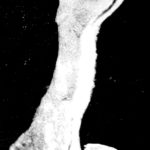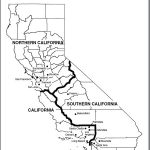U.S. Forest Service Chief Tom Tidwell announced last week that the agency will begin night helicopter wildfire suppression operations this season in Southern California.
“The re-introduction of Forest Service night helicopter firefighting operations in Southern California further establishes the agency’s commitment to protect lives and property in the region,” said Tidwell in a press release. “California has already experienced challenging wildfires this season, and is projected to continue to have a severe summer. Night-flying operations will provide an aggressive agency initial attack while better ensuring public safety, minimizing overall fire costs and lessening impacts to communities.”
In the 1970s, the Forest Service placed a restriction on night-flying helicopters following a tragic helicopter crash in the Angeles National Forest. Since then the agency has not employed night flights and, instead, has relied upon other local agencies to supply these firefighting tools when available.
“With California suffering through a severe drought, this year’s wildfire season could be especially dangerous,” said Sen. Dianne Feinstein of California. “That’s why I told Forest Service Chief Tom Tidwell at a recent Senate hearing that he must make every firefighting resource available. Attacking wildfires at night from the air — when temperatures and winds are down and humidity is up — is an important tool, so resumption of Forest Service flights comes not a moment too soon. As California grows hotter and drier, we must make every effort to quickly contain wildfires, and nighttime aerial firefighting is a big part of that effort.”
The program began this month, following aircrew and aircraft certifications, and to support suppression efforts in the wildland urban interface areas within and adjacent to the Angeles, Cleveland and San Bernardino national forests, and the southern half of the Los Padres National Forest.
The Air Commander 690, an air attack platform that collects data and assesses fire from the air, was used four nights during the recemt Powerhouse Fire in the Angeles National Forest, northeast of the Castaic Lake State Recreation Area, according to Stanton Florea, fire information officer for the Forest Service’s Pacific Southwest Region.
The Angeles National Forest, coordinating with local, county and state partners, will determine when to use the night-flying helicopter, which will be assigned to incidents through normal dispatch protocols.
The helicopter, a Bell Super 205, will not carry a bucket for nightly water drops. It will have an external storage tank at night. It will land and be refilled manually, Florea said. During the day, it will employ a snorkle to load fluids for air attacks.
The Forest Service will also implement a night aerial supervision fixed-wing program to support the helicopter night-flying operations. The aircraft will be equipped with technology to support night ground and air firefighting operations, including an infrared camera, and command and control avionics equipment.
Each Southern California national forest will develop its own guidelines and protocols for night flying.
The night-flying helicopter will be available if a fire in a national forest is threatening communities outside the forest, too, Florea added.
Other agencies, including Los Angeles City and County fire departments, and agencies in San Diego, Ventura, Santa Barbara and Kern counties, have employed night-flying tactics to great success and routinely use aircraft — both helicopters and planes — to douse flames at night.
The agency’s helicopter night-flying operations will be consistently evaluated to determine their benefit in terms of containing fires, preventing new starts from becoming large fires and potential cost savings in fire suppression. If a measurable benefit is determined and a documented need is assessed in other areas of the country, the Forest Service will evaluate expanding the program.










